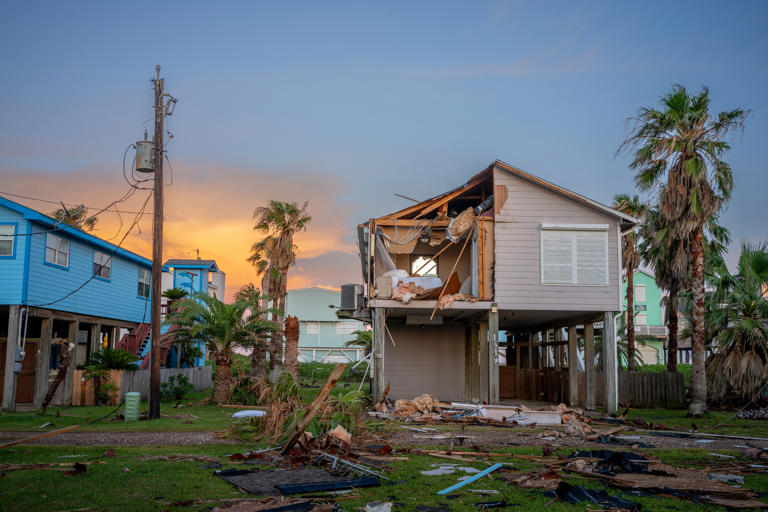“Homeowners Policy Shock,” as described by Dallas resident Paul Barth, is a growing concern among homeowners, particularly in regions like North Texas. This term encapsulates the unsettling realization many homeowners face when they discover that insurance companies are increasingly requiring higher deductibles on their policies, effectively shifting more financial risk onto the insured.
Just a few years ago, it was common for a homeowners’ insurance policy to have a standard deductible of 1% of the home’s replacement value. This meant that if a homeowner needed to file a claim, they would be responsible for paying 1% of the cost before the insurance company would cover the rest. For example, on a home valued at $100,000, the homeowner’s out-of-pocket expense would be $1,000. However, in recent years, many insurance companies have begun raising this deductible to 2%, effectively doubling the amount a homeowner must pay before insurance kicks in.
To put this into perspective, consider the current median home price in the Dallas-Fort Worth area, which is approximately $400,000 according to the MetroTex Association of Realtors. With a 1% deductible, a homeowner would be required to pay $4,000 out of pocket for repairs. If the deductible is increased to 2%, that amount jumps to $8,000. This increase can create significant financial strain, especially when dealing with costly repairs such as roof replacements or major structural damage.
The implications of this shift are profound. Many families may find themselves struggling to cover these higher costs, leading to difficult financial decisions. Some may need to take out home equity loans or dip into their life savings to cover the deductible. Others might be forced to delay or even cancel necessary repairs, potentially leading to further damage and increased costs down the line.
Compounding the issue, insurance companies are also increasingly applying depreciation to roof replacement costs. In the past, insurers typically covered the full replacement cost of a roof. However, now many companies only cover the actual cash value, which accounts for depreciation. For instance, if a roof is expected to last 20 years and is already 15 years old, the insurance company might only cover the value of the remaining five years, leaving the homeowner to cover the rest. This change further increases the financial burden on homeowners, particularly those with older homes or roofs that are nearing the end of their lifespan.
Consumer advocates argue that these changes disproportionately benefit insurance companies at the expense of policyholders. According to Douglas Heller, director of insurance for the Consumer Federation of America, these practices “conspire to transfer more of the risk back to homeowners.” He contends that while insurers may claim these measures are necessary to maintain profitability in the face of rising construction costs and an increase in natural disasters, they ultimately reduce the protections available to homeowners.
Insurance companies, on the other hand, argue that these changes are a response to the increasing frequency and severity of natural disasters, as well as the rising costs of labor and materials. Richard Johnson of the Insurance Council of Texas explains that higher deductibles help the industry manage these rising costs, ensuring that companies can continue to offer coverage to all policyholders while maintaining their financial health. By adjusting deductibles, insurers aim to keep premiums as affordable as possible, although this often comes at the cost of reduced coverage for homeowners.
The trend of increasing deductibles is not limited to 2%. Some companies are even considering deductibles as high as 5%, although this remains relatively rare. Ben Gonzalez of the Texas Department of Insurance notes that insurance companies have “broad flexibility” to set deductibles, and while the department reviews requests to raise premiums, they do not have the same oversight when it comes to deductibles. This allows companies to make significant changes to policy terms with relatively little regulatory interference, provided they give policyholders at least 30 days’ notice before a renewal.
To address these challenges, some consumer advocates are pushing for legislative solutions. Ware Wendell of Texas Watch highlights a bill in Congress (H.R. 6944) that would create a national catastrophic property loss reinsurance program. Proponents of the bill argue that federal coordination could help stabilize the insurance market by spreading the risk of catastrophic events across a broader base, potentially leading to more consistent and affordable coverage for homeowners nationwide.
For now, homeowners are advised to take a proactive approach to managing their insurance coverage. The Texas Department of Insurance recommends that consumers carefully consider their deductibles when purchasing or renewing a policy. With over 150 insurance companies operating in the state, prices and coverage options can vary widely, so shopping around and discussing deductible options with an insurance agent can help homeowners find the best balance between premiums and out-of-pocket expenses.
Ultimately, “Homeowners Policy Shock” is a reminder of the importance of staying informed and vigilant in an ever-changing insurance landscape. While rising deductibles and shifting coverage terms may be challenging to navigate, understanding these changes and taking steps to mitigate their impact can help homeowners protect their financial stability in the face of unexpected events.
